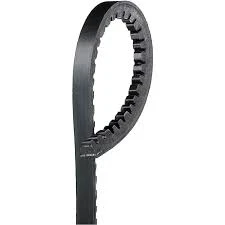- Arabic
- French
- Russian
- Spanish
- Portuguese
- Turkish
- Armenian
- English
- Albanian
- Amharic
- Azerbaijani
- Basque
- Belarusian
- Bengali
- Bosnian
- Bulgarian
- Catalan
- Cebuano
- Corsican
- Croatian
- Czech
- Danish
- Dutch
- Afrikaans
- Esperanto
- Estonian
- Finnish
- Frisian
- Galician
- Georgian
- German
- Greek
- Gujarati
- Haitian Creole
- hausa
- hawaiian
- Hebrew
- Hindi
- Miao
- Hungarian
- Icelandic
- igbo
- Indonesian
- irish
- Italian
- Japanese
- Javanese
- Kannada
- kazakh
- Khmer
- Rwandese
- Korean
- Kurdish
- Kyrgyz
- Lao
- Latin
- Latvian
- Lithuanian
- Luxembourgish
- Macedonian
- Malgashi
- Malay
- Malayalam
- Maltese
- Maori
- Marathi
- Mongolian
- Myanmar
- Nepali
- Norwegian
- Norwegian
- Occitan
- Pashto
- Persian
- Polish
- Punjabi
- Romanian
- Samoan
- Scottish Gaelic
- Serbian
- Sesotho
- Shona
- Sindhi
- Sinhala
- Slovak
- Slovenian
- Somali
- Sundanese
- Swahili
- Swedish
- Tagalog
- Tajik
- Tamil
- Tatar
- Telugu
- Thai
- Turkmen
- Ukrainian
- Urdu
- Uighur
- Uzbek
- Vietnamese
- Welsh
- Bantu
- Yiddish
- Yoruba
- Zulu
des . 11, 2024 10:41 Back to list
Understanding the Importance of Belts in Motorcycle Performance and Maintenance
The Role of Belts in Motorcycles A Comprehensive Overview
Motorcycles have long been a symbol of freedom and adventure, but the mechanics that keep them running smoothly can often go unnoticed. Among the various components that contribute to the performance and efficiency of a motorcycle, the belt system stands out as a vital element, particularly in certain types of bikes. In this article, we will explore the role of belts in motorcycles, their advantages, and the considerations that come with their use.
Understanding Belt Systems
Belt drives, or belt systems, are commonly used in motorcycles for power transmission. Unlike traditional chain drives or shaft drives, belt systems utilize a toothed or notched belt. This belt connects the engine's output shaft to the rear wheel’s drive mechanism. Belts are typically made from high-strength materials, such as polyurethane reinforced with fiberglass or carbon fibers, to bear the load and resist wear.
Advantages of Belt Drives
1. Smooth Operation One of the primary benefits of a belt drive system is its smooth operation. The elastic nature of the belt allows for a quieter and less aggressive transfer of power compared to chain drives. This results in a more comfortable ride, especially on long journeys.
2. Low Maintenance Belt drives require less maintenance than their chain counterparts. While chains need regular lubrication and adjustment, belts maintain their tension without the need for constant upkeep. This makes them an appealing choice for riders looking for a hassle-free experience.
3. Durability High-quality belt systems are designed for longevity. Unlike chains that can stretch or wear out over time, belts resist wear and can last significantly longer if properly maintained. This durability can be particularly beneficial for touring motorcycles that cover long distances over various terrains.
belt in motorcycle

4. Reduced Weight In comparison to metal chain systems, belts tend to be lighter. This reduction in weight can contribute to a motorcycle's overall performance, allowing for better handling and acceleration.
5. No Lubrication Required The absence of the need for lubrication makes belt systems cleaner and more environmentally friendly. There’s no concern about oil on the bike or on the rider’s clothes, making for a much tidier operation.
Considerations and Disadvantages
While belt systems offer several advantages, they do come with their own set of considerations. For instance, belts may not be as efficient in power transfer as chains in high-performance applications. This means that riders looking for aggressive acceleration or racing capabilities might prefer a chain system. Additionally, if a belt does happen to break, it can be more challenging to replace compared to chains, especially in remote areas.
Moreover, belt drives can be more sensitive to environmental conditions. Factors like extreme heat or cold, debris, or water can potentially affect the performance of a belt system. Riders must be mindful of these conditions when maintaining their motorcycles.
Conclusion
In summary, belts in motorcycles play an essential role, especially in cruising and touring applications where smoothness and maintenance are prioritized. Their advantages—such as low maintenance, durability, and quiet operation—make them a popular choice among many riders. However, potential buyers should carefully consider their riding style and needs when choosing between belt, chain, or shaft drive systems. By understanding the nuances of each system, riders can make informed decisions that will enhance their motorcycling experience.
-
Korean Auto Parts Timing Belt 24312-37500 For Hyundai/Kia
NewsMar.07,2025
-
7PK2300 90916-T2024 RIBBED BELT POLY V BELT PK BELT
NewsMar.07,2025
-
Chinese Auto Belt Factory 310-2M-22 For BMW/Mercedes-Benz
NewsMar.07,2025
-
Chinese Auto Belt Factory 310-2M-22 For BMW/Mercedes-Benz
NewsMar.07,2025
-
90916-02660 PK Belt 6PK1680 For Toyota
NewsMar.07,2025
-
drive belt serpentine belt
NewsMar.07,2025

